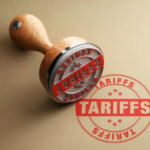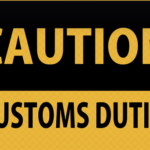After the launch last week of widespread tariffs by the US against EU-originating imports, there has been a focus on finalising a multi-pronged EU response. This approach seeks to build an attractive atmosphere for restarting negotiations and avoiding renewed trade conflicts. Washington’s announcement Wednesday of a 20 percent tariff on all imports from the European Union has not prevented the bloc from soldiering on in the meticulous crafting of its countermeasures.
EU officials have signalled that they wish to use this time strategically to talk to their US counterparts — and to find solutions that both sides can agree on. The emphasis continues on identifying a response that responds appropriately to the effects of the US tariffs, while also protecting EU member states and jurisdictions from the extent possible. This is a response that illustrates an agile effort to minimize risk in a difficult trade environment.
The EU knows from past US experience on the imposition of tariffs, including the 25% tax on steel and aluminium and the tariffs on automobiles that current relations are under scrutiny. As well as the recently announced 20% retaliation tariff on all products originating in the bloc, these previous moves are now under review, alongside the nature of the EU response expected.
Consideration of Precise Countermeasures
European Union member states are currently evaluating a variety of reprisals targeting particular US products. Early talk around the retaliatory tariffs has focused on two separate lists of products that could face such measures, with the goal of implementing them as soon as mid-April. The EU is also conducting a broader review to consider alternative countermeasures for a later stage of the response. It would be aimed directly at the tariffs on cars also imposed by the United States and any retaliatory tariffs that may be imposed.
In making potential response avenues, an option seen by the EU is to aim at the United States’ services trade surplus with the bloc. This is a strategic consideration in sectors for which the US economy enjoys a positive trade balance. The European Union is also expected to adopt its ‘anti-coercion’ instrument, a mechanism agreed in 2023, This instrument gives the EU the prospect of leveraging business licensing and intellectual property regimes to counter what it views as coercive economic behaviour.
Senior EU officials have confirmed a full assessment of all available means is already taking place. Any countermeasures will be based on the principle of proportionality, that is to say, the EU reaction will be proportionate to the US actions. The overall goal is still to enable productive talks and get to resolution, not to make the trade problems worse.
Focus on Keeping Channels Open for Negotiation
The European Union sees maintaining open lines with the United States as what could be a priority. Maroš Šefčovič, the EU’s trade commissioner, is to hold a video-conference with his US counterparts on Friday in keeping with this pledge. The move signals the EU’s readiness to engage in dialogue with the UK, to provide a platform for addressing the current trade situation and to avoid potential escalation.
Ask yourself what is your own capacity to negotiate between those and where do the EU hopes to be in these talks? Officials have assured that any such countermeasures will be intended to induce negotiation with the US, rather than punishment. This subtle change in tone reflects the EU’s desire to play a constructive role in addressing the ongoing trade disputes.
In addition, the EU sees the potential for the talks to include mutual tariff rate cuts on both sides of the Atlantic. Recognising that average tariff levels in some sectors are already low, the EU also states that further reduction might be possible on a reciprocal and balanced basis. The fact it expresses a willingness to consider deeper trade liberalisation as a negotiated outcome of the dialogue suggests a forward-looking outlook.
Diverging Views on Current Tariff Levels
However, the current rates of tariffs from both sides are a point of contention. The EU imposes a uniform 5% tariff on US imports, according to the US. But on average, EU tariffs on US exports this year were 1.2% according to senior EU officials, who want to make that argument. Such tariffs imposed by the EU on imports from the US averaged 5.4% during that period, they also argue, whereas the average US tariffs on imports from the EU stood at 1.4%. These varied estimates of the current tariff environment illustrate the need for factual clarity in the ongoing debate.
It expects the most difficult challenges will lie in negotiations on five sectors. These sectors, deemed vital to the United States, include those related to automobiles, aluminium and steel, semi-conductors and lumber, and pharmaceuticals. The EU anticipates more complex negotiations in these sectors where both sides have considerable economic interests at stake.
Ultimately, with its careful and measured response to the latest U.S. tariffs, the European Union is emerging on a side of trade which, in a world in crisis, makes sense. The focus is still on designing proportionate retaliatory measures, but there is a diplomatic effort to leave the door open for real engagement and negotiation. Moreover, the EU’s willingness in this proposal to keeping the consistency of communication channels open and to pursue potential pathways for mutual tariff reductions suggest interest in seeking a positive solution beneficial to both parties. With this guidance, the EU will try to avoid making mistakes to the same extent as in the case of the tariffs imposed on China, and the debates indicate a willingness to develop an approach to the US that would make it possible to overcome the current trade conflict.






